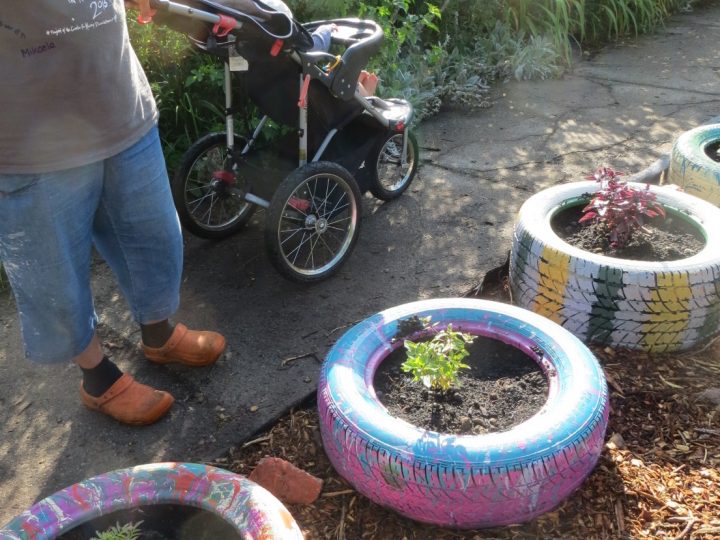
Neighbors Building Brightmoor
Fifteen blocks of the Neighbors Building Brightmoor target showcase numerous ways land that stewardship can support community—especially youth.
Photo © Detroit Future City
The Brightmoor subdivision opened in 1922 as a planned community of inexpensive housing for Southern migrants. Workers were recruited from Appalachia with the lure of employment at one of Detroit's expanding automobile manufacturing plants by an associate of Henry Ford.
In 2006, when Riet Schumack and her family moved to Brightmoor it had become an overgrown, crime-ridden, largely abandoned, disinvested, blighted dumping ground. She came to the neighborhood to garden and work with young people. She began by growing a youth garden. Within three years, Neighbors Building Brightmoor (NBB) formed.
In 2014, the youth participating in the garden earned $3,000 from produce sales.

Photo © Detroit Future City

Photo © Detroit Future City

Photo © Detroit Future City

Photo © Detroit Future City

Photo © Detroit Future City


Photo © Detroit Future City

Photo © Detroit Future City

Photo © Detroit Future City
The youth learned how to construct the plant beds, plant, maintain, harvest and market the products of their labor. At the same time they also learn responsibility, ownership, hard work, patience, planning, and teamwork.
Today, the fifteen blocks of the NBB target area are a colorful patchwork of a variety of primarily agricultural uses. Ten families have moved into this section of Brightmoor over the past three years, to live modest lives similar in many ways to Brightmoor’s original residents. They share a concern for the evolution of climate change, drought, the high cost and low quality of food and water, and enjoy living largely self-sufficient lifestyles.
Included in the NBB patchwork is an edible playscape and a flower lot bursting with a variety of wildflowers. Five adjoining vacant lots include an orchard, green house and community garden. There is a water wall, earth walls and a rain catch system for collecting water for the gardens; gardens with plants that attract birds and butterflies and clover patches, which add nitrogen to the soil and discourage weed growth. There is a lot that has been turned into a gathering place for children; an outdoor stage for music performances and festivals; a pocket park; a permaculture garden and colorful murals.
As the city demolishes and clears vacant properties, the community is recycling the wood chips to fertilize the soil. DTE and other tree cutting businesses also have been invited to dump wood chips on a designated lot. The community covers the cleared lots with the wood chips, which decompose and fertilize the soil.
Related Websites
Visit Neighbors Building Brightmoor website
Visit Neighbors Building Brightmoor’s Facebook page
